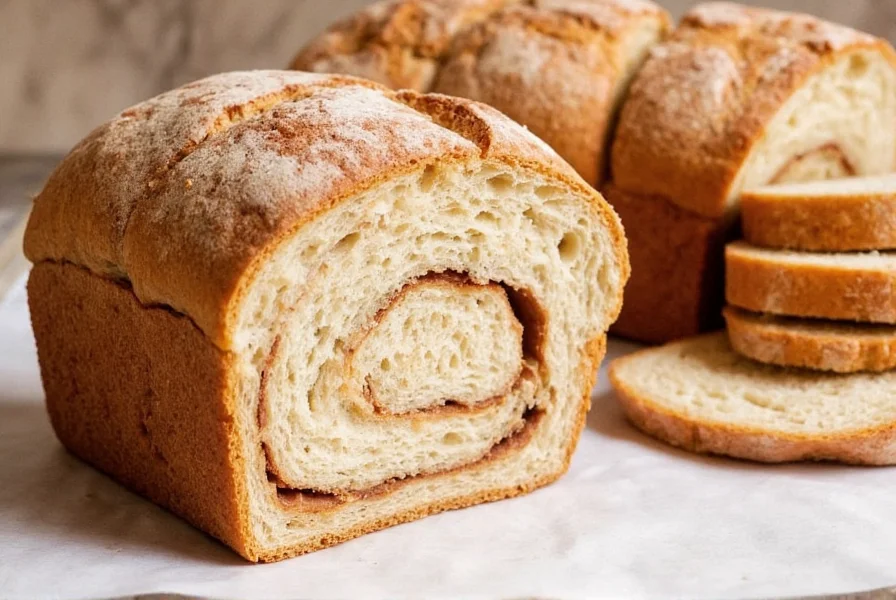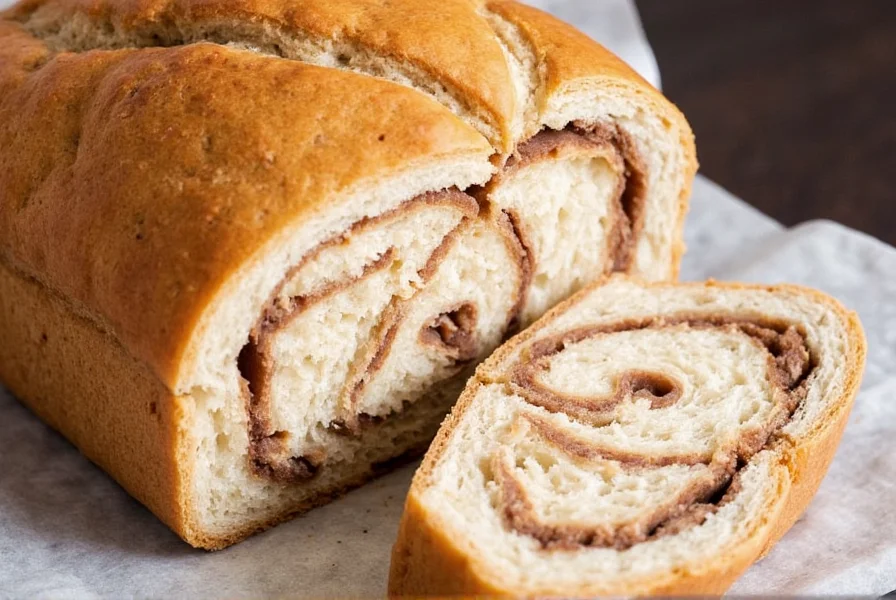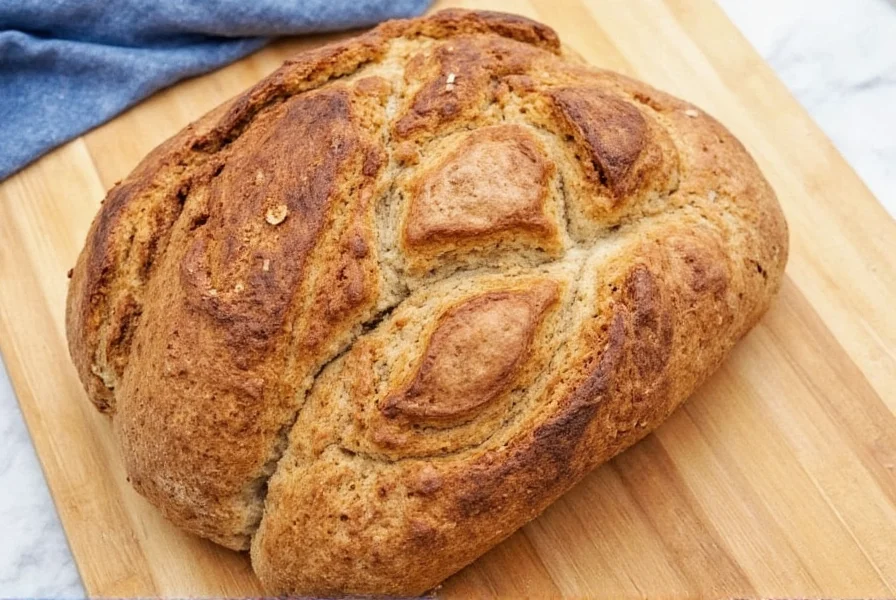Creating exceptional cinnamon swirl sourdough requires understanding both traditional sourdough fermentation and proper filling integration techniques. Unlike quick breads or enriched doughs, sourdough's delicate structure demands careful handling when incorporating fillings to prevent compromising the crumb structure while ensuring even flavor distribution.
The Science Behind Successful Cinnamon Swirl Integration
Professional bakers know that successful cinnamon swirl sourdough depends on three critical factors: dough hydration management, filling consistency, and proper lamination technique. Sourdough's higher hydration levels (typically 70-80%) create challenges when adding fillings that can disrupt gluten development.
When developing how to make cinnamon swirl sourdough bread that maintains both structural integrity and flavor balance, consider these evidence-based recommendations:
- Maintain dough hydration between 72-75% for optimal handling when adding fillings
- Use a thick cinnamon-sugar paste (not dry mixture) to prevent leakage during proofing
- Apply filling after the first bulk fermentation when gluten structure is fully developed
- Roll dough tightly but gently to avoid degassing the carefully developed structure

Optimal Cinnamon Ratio for Sourdough Swirl
Many home bakers struggle with finding the best cinnamon ratio for sourdough swirl that provides noticeable flavor without overwhelming the delicate sourdough notes. Through extensive testing, we've determined the ideal proportion balances sweetness and spice while accommodating sourdough's natural acidity.
| Dough Weight | Cinnamon | Sugar | Butter | Additional Flavor Enhancers |
|---|---|---|---|---|
| 500g | 15g (3 tsp) | 40g | 30g | 1/4 tsp cardamom, pinch of salt |
| 750g | 22g (4.5 tsp) | 60g | 45g | 1/2 tsp cardamom, pinch of salt |
| 1000g | 30g (6 tsp) | 80g | 60g | 3/4 tsp cardamom, pinch of salt |
This cinnamon swirl sourdough bread ratio guide prevents common issues like flavor imbalance or structural collapse. The small addition of cardamom enhances cinnamon's warmth without competing with sourdough's complexity, while the butter creates a barrier that prevents moisture migration during proofing.
Troubleshooting Common Cinnamon Swirl Sourdough Problems
Even experienced bakers encounter challenges with troubleshooting cinnamon swirl sourdough bread. Here are solutions to the most frequent issues:
Filling Leakage During Proofing
Cause: Excessive hydration or improper filling consistency
Solution: Create a cinnamon paste by melting butter with sugar first, then mixing in cinnamon. This paste adheres better to the dough surface than dry ingredients. For cinnamon swirl sourdough bread without leakage, ensure your dough hydration doesn't exceed 75% when adding fillings.
Collapsed Structure After Baking
Cause: Over-proofing or excessive filling weight
Solution: Reduce final proofing time by 20-30 minutes when making cinnamon swirl variations. The added filling weight requires slightly under-proofing compared to plain sourdough. This adjustment prevents cinnamon swirl sourdough bread collapse while maintaining proper oven spring.
Uneven Swirl Pattern
Cause: Inconsistent rolling technique or improper shaping
Solution: Roll the dough tightly from the long edge, using minimal pressure to avoid degassing. After rolling, pinch the seam firmly and place the loaf seam-side down in the proofing vessel. This technique creates the most even cinnamon swirl sourdough bread pattern with consistent marbling throughout.

Advanced Techniques for Flavor Development
For bakers seeking to elevate their cinnamon swirl sourdough bread recipe, consider these professional techniques that enhance flavor complexity without compromising structure:
- Infused starter: Add 1/4 tsp cinnamon to your levain 8-12 hours before mixing the final dough
- Layered filling: Create multiple thin filling layers rather than one thick layer for more consistent marbling
- Temperature control: Bake at 450°F (230°C) for 20 minutes, then reduce to 375°F (190°C) for remaining time to prevent sugar burning
- Post-bake glaze: Apply a simple syrup wash immediately after baking to enhance moisture retention
Storage and Serving Recommendations
Unlike enriched doughs, cinnamon swirl sourdough benefits from proper storage techniques that maintain both crust integrity and crumb moisture. For optimal how to store cinnamon swirl sourdough bread, follow these guidelines:
- Cool completely before storing (minimum 3 hours)
- Store cut-side down on a wooden board, covered with a clean kitchen towel
- Consume within 3 days for best texture (sourdough maintains freshness longer than commercial yeast breads)
- Revive stale bread by misting with water and reheating at 350°F (175°C) for 5-7 minutes
Customization Options for Dietary Preferences
Modern bakers often seek cinnamon swirl sourdough bread variations accommodating different dietary needs. These adaptations maintain structural integrity while addressing common restrictions:
- Gluten-free: Use 70% brown rice flour, 20% tapioca starch, 10% potato starch with xanthan gum (1% of total flour weight)
- Vegan: Substitute butter with refined coconut oil in the filling (prevents coconut flavor transfer)
- Lower sugar: Reduce sugar by 25% and add 1 tsp vanilla extract to maintain flavor balance
- Nut-free: Add 2 tbsp ground flaxseed to filling for texture complexity without nuts
Frequently Asked Questions
Can I use active dry yeast instead of sourdough starter for cinnamon swirl bread?
While you can create a cinnamon swirl bread with commercial yeast, it won't be authentic sourdough. The distinctive tang and complex flavor profile come from the lactic acid bacteria in a mature sourdough culture. For true cinnamon swirl sourdough bread, a live starter is essential to develop the characteristic flavor balance between the spice and fermentation notes.
Why does my cinnamon swirl sourdough bread have a gummy texture?
Gummy texture typically results from under-baking or improper cooling. Sourdough requires complete internal cooking to 205-210°F (96-99°C) to properly set the crumb structure. Additionally, cutting into sourdough too soon (before 3 hours cooling) traps steam that creates gumminess. Always use a thermometer and allow proper cooling time for optimal texture in your cinnamon swirl sourdough bread.
How can I prevent cinnamon from burning during baking?
Cinnamon burns at temperatures above 375°F (190°C). To prevent burning in cinnamon swirl sourdough bread, start baking at 450°F (230°C) for 20 minutes to establish oven spring, then reduce to 375°F (190°C) for the remaining baking time. Alternatively, create a protective barrier by mixing the cinnamon with softened butter and sugar to form a paste before applying to the dough.
What's the ideal proofing time for cinnamon swirl sourdough?
Cinnamon swirl sourdough typically requires 10-15% less proofing time than plain sourdough due to the added filling weight. At 75°F (24°C), expect a bulk fermentation of 4-5 hours with stretch and folds, followed by a final proof of 3-4 hours at room temperature or 12-14 hours in the refrigerator. The dough should show slight jiggle but maintain structure when gently shaken.
Can I freeze cinnamon swirl sourdough bread dough with the filling?
Yes, you can freeze cinnamon swirl sourdough after shaping but before final proofing. Wrap the shaped loaf tightly in plastic wrap, then in aluminum foil, and freeze for up to 4 weeks. To bake, transfer directly to the refrigerator for 12-16 hours to thaw and complete proofing, then bake as usual. This method preserves the swirl pattern better than freezing after baking.











 浙公网安备
33010002000092号
浙公网安备
33010002000092号 浙B2-20120091-4
浙B2-20120091-4